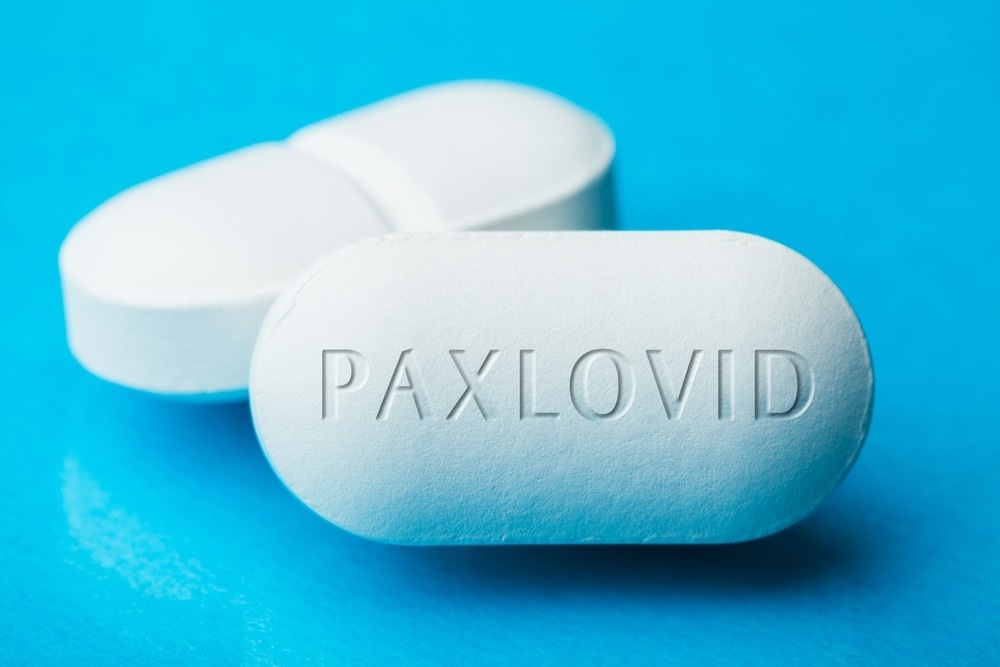In a recent article posted to the medRxiv* preprint server, scientists analyzed the differences between severe acute respiratory syndrome coronavirus 2 (SARS-CoV-2) rebound associated with the Omicron BA.2.12.1 and BA.5 sublineages post-Paxlovid therapy in the United States (US).

Background
The Food and Drug Administration (FDA) has approved Paxlovid for treating mild-to-moderate SARS-CoV-2 infection. The Centers for Disease Control and Prevention (CDC) published a Health Alert Network Health Advisory in May 2022 on the possibility of coronavirus disease 2019 (COVID-19) rebound following Paxlovid therapy.
The SARS-CoV-2 Omicron BA.5 sublineage has become the predominant viral variant in the US from June 2022. Moreover, it was more immune to neutralizing antibodies than the prior Omicron BA.2.12.1 subvariant. There are still unanswered questions regarding how the Omicron BA.2.12.1 and BA.5 subvariants differ in COVID-19 rebound following Paxlovid treatment.
About the study
The present retrospective cohort research aimed to compare the risks of COVID-19 rebound in individuals who had SARS-CoV-2 infections during the BA.2.12.1 and BA.5 subvariant predominance phases in the US after receiving Paxlovid treatments.
The team leveraged the TriNetX Analytics COVID-19 Research Network platform, which has access to real-time and nationwide de-identified electronic health records (EHRs) of 98 million distinct patients from 76 healthcare institutions with outpatient and inpatient facilities spread throughout 50 US states. This platform covered individuals in diverse age groups, geographic locations, ethnic and racial groups, insurance types, and income levels.
The study included 15,913 patients aged 12 years or older who were COVID-19-infected between 8 May 2022 and 18 July 2022 and treated with Paxlovid within five days of infection. The study population was split into two groups: 1) the BA.5 group, which included 5,161 subjects who contracted COVID-19 between 19 June 2022 and 18 July 2022, when Omicron BA.5 was the dominant variant; and 2) the BA.2.12.1 group, which included 10,752 subjects who contracted COVID-19 between 8 May 2022 and 18 June 2022, when Omicron BA.2.12.1 was the dominant variant.
The authors compared the chances for SARS-CoV-2 rebound outcomes in the BA.2.12.1 and BA.5 groups pre- and post-propensity-score matching for factors including age, gender, and ethnicity relevant to SARS-CoV-2 infections and outcomes. They monitored rebound COVID-19 and symptoms from two to eight days post-Paxlovid treatment, and Kaplan-Meier survival analysis was used to calculate the likelihood of outcomes.
Besides, Cox's proportional hazards model was employed for comparing two groups. According to a comparison of time to event frequencies, the team used the 95% confidence intervals (CIs) and hazard ratio (HR) to characterize the relative risk of rebound outcomes. On 4 August 2022, all statistical analyses were performed in the TriNetX Advanced Analytics Platform using the survival package of R software, version 3.2-3.
Results
According to the study results, the only difference between the Omicron BA.2.12.1 and BA.5 cohorts was that the BA.5 group included a higher proportion of Hispanics. However, the two groups were comparable following propensity-score matching.
In the BA.2.12.1 cohort and the BA.5 cohort, the cumulative probability of SARS-CoV-2 rebound infection two to eight days following Paxlovid therapy was 3.42% and 2.81%, respectively. The BA.5 group had a higher immediate threat of rebound symptoms versus the BA.2.12.1 group, but there was no difference in the likelihood of rebound infections. Following propensity-score matching, the BA.5 cohort had higher immediate odds of rebound infections and symptoms versus the matched BA.2.12.1 group.
Limitations
The study limitations include the possibility of under-, mis-, and overdiagnosis across patient EHRs. Besides, variables like medication adherence and treatment regimen completion were unmeasured. Nevertheless, according to the authors, since the TriNetX dataset served as the source for both comparison populations, these problems might not significantly impact the relative risk assessments.
Additionally, patients in the TriNetX database might not accurately reflect the total US population. Furthermore, the cumulative risks of SARS-CoV-2 rebound recorded in EHRs were possibly significantly underestimated relative to the actual prevalence. The researchers mentioned that this undercount might not prominently impact the comparison of immediate risks between the BA.2.12.1 and BA.5 cohorts. Nonetheless, they stated the study results require verification across other populations.
Conclusions
The study findings showed that the Omicron BA.5 group had higher rates of SARS-CoV-2 rebound infections and symptoms two to eight days following Paxlovid treatment than the propensity-score matched BA.2.12.1 group. The team noted that as SARS-CoV-2 evolves with consecutive subvariants increasingly resistant to antibodies, COVID-19 rebounds following Paxlovid treatment demands vigilant, continuous monitoring. Similarly, lengthier Paxlovid therapy also requires assessment.
*Important notice
medRxiv publishes preliminary scientific reports that are not peer-reviewed and, therefore, should not be regarded as conclusive, guide clinical practice/health-related behavior, or treated as established information.
- Wang, L. et al. (2022) "COVID-19 rebound after Paxlovid treatment during Omicron BA.5 vs BA.2.12.1 subvariant predominance period". medRxiv. doi: 10.1101/2022.08.04.22278450. https://www.medrxiv.org/content/10.1101/2022.08.04.22278450v1
Posted in: Medical Science News | Medical Research News | Disease/Infection News
Tags: Antibodies, Coronavirus, Coronavirus Disease COVID-19, covid-19, Food, Healthcare, Medication Adherence, Omicron, Research, Respiratory, SARS, SARS-CoV-2, Severe Acute Respiratory, Severe Acute Respiratory Syndrome, Syndrome

Written by
Shanet Susan Alex
Shanet Susan Alex, a medical writer, based in Kerala, India, is a Doctor of Pharmacy graduate from Kerala University of Health Sciences. Her academic background is in clinical pharmacy and research, and she is passionate about medical writing. Shanet has published papers in the International Journal of Medical Science and Current Research (IJMSCR), the International Journal of Pharmacy (IJP), and the International Journal of Medical Science and Applied Research (IJMSAR). Apart from work, she enjoys listening to music and watching movies.
Source: Read Full Article
